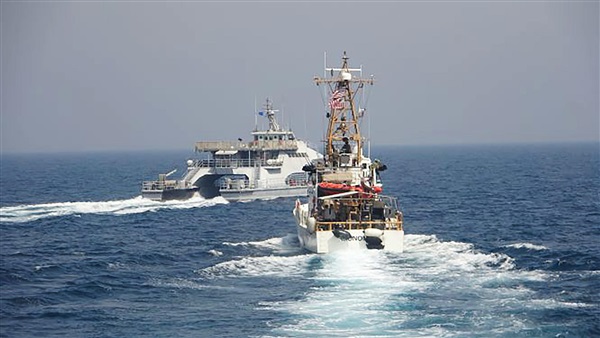Iran, U.S. warships in first tense Mideast encounter in a year

Tehran did not immediately acknowledge the incident in the southern reaches of the Persian Gulf, which resulted in no injuries or damage.
American
and Iranian warships had a tense encounter in the Persian Gulf earlier this
month, the first such incident in about a year amid wider turmoil in the region
over Tehran's tattered nuclear deal, the U.S. Navy said Tuesday.
Footage
released by the Navy showed a ship commanded by Iran's paramilitary
Revolutionary Guard cut in front of the USCGC Monomoy, causing the Coast Guard
vessel to come to an abrupt stop with its engine smoking on April 2.
The
Guard also did the same with another Coast Guard vessel, the USCGC Wrangell,
said Cmdr. Rebecca Rebarich, a spokeswoman for the Navy's Mideast-based 5th
Fleet. Such close passes risk the ships colliding at sea.
Iran
did not immediately acknowledge the incident in the southern reaches of the
Persian Gulf, which resulted in no injuries or damage.
"The U.S. crews issued multiple warnings via
bridge-to-bridge radio, five short blasts from the ships’ horns, and while the
[Iranian] Harth 55 responded to the bridge-to-bridge radio queries, they
continued the unsafe maneuvers," Rebarich said.
“After approximately three hour of the U.S.
issuing warning and conducting defensive maneuvers, the [Iranian] vessels
maneuvered away from the U.S. ships and opened distance between them."
The
Wall Street Journal first reported on the incident, which involved the Iranian
Harth support ship and three Iranian fast-attack craft. The Coast Guard units
operate out of Bahrain as part of Patrol Forces Southwest Asia, its biggest
unit overseas.
The
interaction marked the first “unsafe and unprofessional” incident involving the
Iranians since April 15, 2020, Rebarich said. However, Iran had largely stopped
such incidents in 2018 and nearly in the entirety of 2019, she said.
In
2017, the Navy recorded 14 instances of what it describes as “unsafe and or
unprofessional” interactions with Iranians forces. It recorded 35 in 2016, and
23 in 2015.
The
incidents at sea almost always involve the Revolutionary Guard, which reports
only to Supreme Leader Ayatollah Ali Khamenei. Typically, they involve Iranian
speedboats armed with deck-mounted machine guns and rocket launchers
test-firing weapons or shadowing American aircraft carriers passing through the
Strait of Hormuz, the narrow mouth of the Persian Gulf through which 20 percent
of all oil passes.
Some
analysts believe the incidents are meant in part to squeeze President Hassan
Rouhani’s administration after the 2015 nuclear deal. They include a 2016
incident in which Iranian forces captured and held overnight 10 U.S. sailors
who strayed into the Islamic Republic’s territorial waters.
“U.S. naval forces continue to remain vigilant and
are trained to act in a professional manner, while our commanding officers
retain the inherent right to act in self-defense,” Rebarich said.
The
incident comes as Iran negotiates with world powers in Vienna over Tehran and
Washington returning to the 2015 nuclear deal, talks due to resume Tuesday.
It
also follows a series of incidents across the Mideast attributed to a shadow
war between Iran and Israel, which includes attacks on regional shipping and
sabotage at Iran's Natanz nuclear facility.





